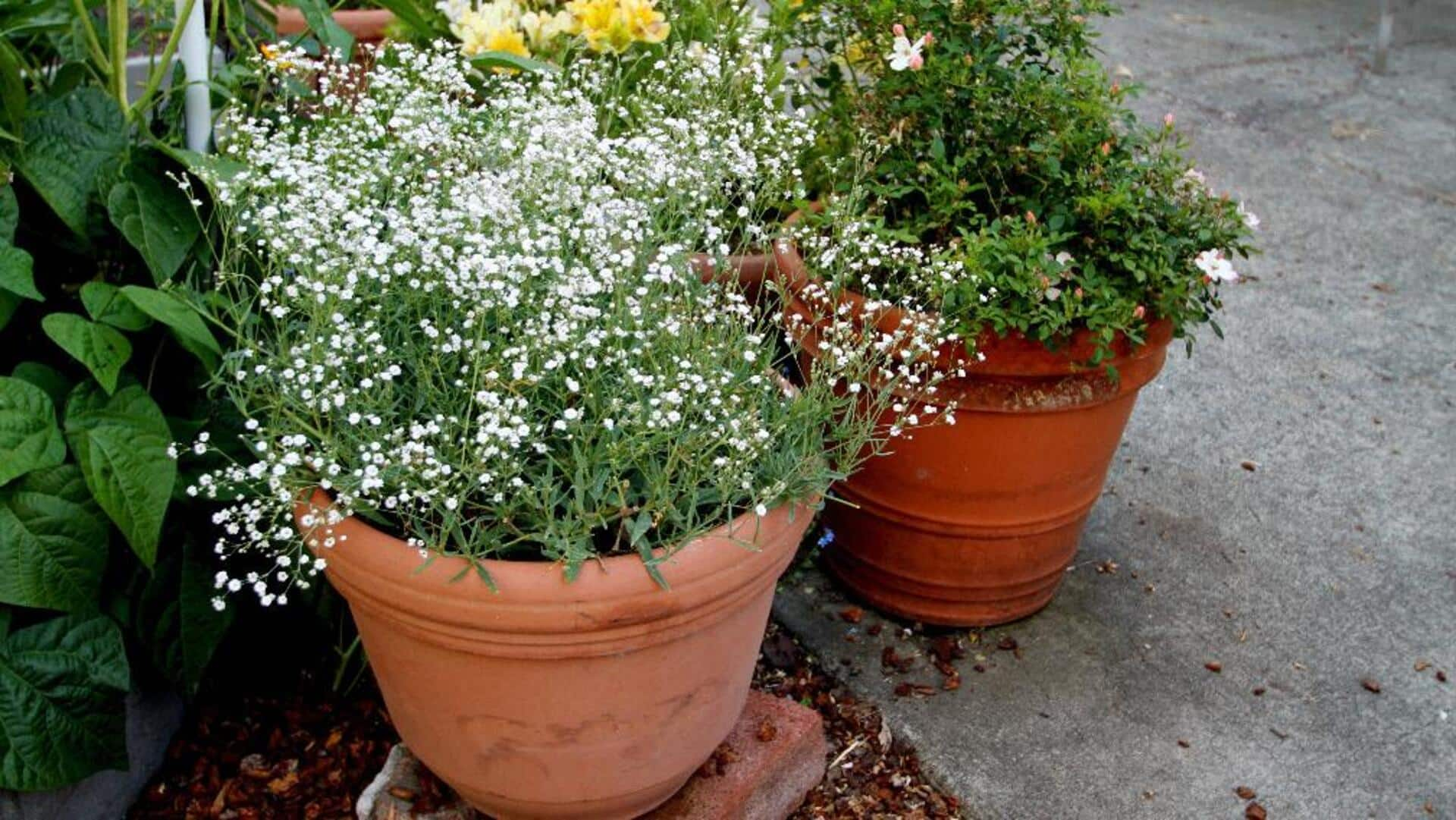
5 easy ways to care for your baby's breath plant
What's the story
Baby's breath (Gypsophila) is a beloved plant for both gardeners and florists, thanks to its airy, cloud-like blooms that bring a touch of delicacy to bouquets and garden landscapes. However, behind its ethereal beauty, baby's breath demands particular care to flourish. This article details five crucial strategies for successfully nurturing these plants, guaranteeing they grow healthy and vibrant.
Soil choice
Selecting the right soil
Baby's breath prefers well-draining soil with a neutral to slightly alkaline pH. Testing the soil's pH is important before planting. If needed, you can adjust it by adding lime to raise the alkalinity or sulfur to lower it. Good drainage is key to preventing root rot, to which this plant is especially prone.
Sunlight needs
Providing adequate sunlight
This plant requires full sunlight for a minimum of six hours each day. An area with direct sunlight is preferable as baby's breath thrives in bright, natural light. If you're growing them indoors, position them near a south-facing window to guarantee adequate sunlight. Insufficient light can result in weak stems and minimal blooms.
Water management
Watering wisely
Although baby's breath dislikes soggy roots, it requires consistent moisture during its growth phase. Water the plants thoroughly once a week, ensuring the soil dries out a bit between watering sessions. Overwatering can lead to root rot, while under-watering during hot spells can stress the plant, resulting in poor flowering.
Nutrition plan
Fertilizing for growth
To keep your baby's breath healthy and vibrant, it's important to fertilize them regularly during their growing season. A balanced fertilizer applied every four weeks will do the trick. A 10-10-10 NPK (nitrogen-phosphorus-potassium) fertilizer, diluted to half strength, works well. This schedule ensures strong growth and plenty of blooms without overloading the plants with too many nutrients, which can actually harm them instead of helping.
Regular maintenance
Pruning and deadheading
Pruning not only keeps them looking tidy but also encourages denser growth, and removing spent flowers (deadheading) will encourage more blooms throughout the season. Once the first wave of blooms has passed, cutting back about one-third of the plant will help trigger a second round of flowering in late summer or early fall.